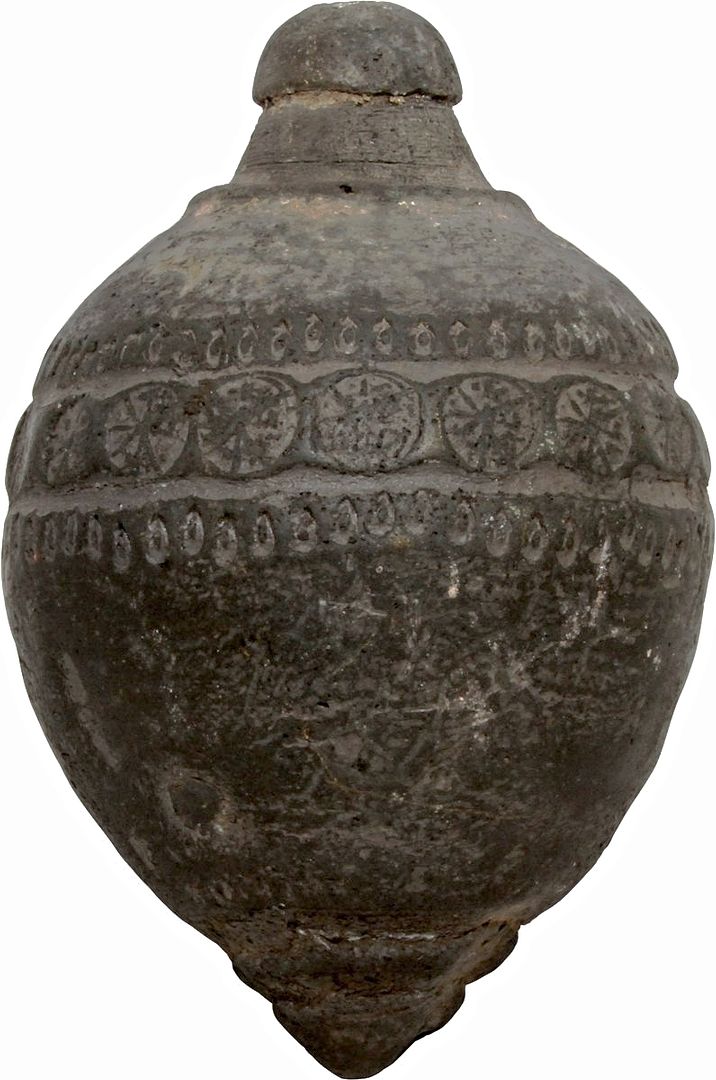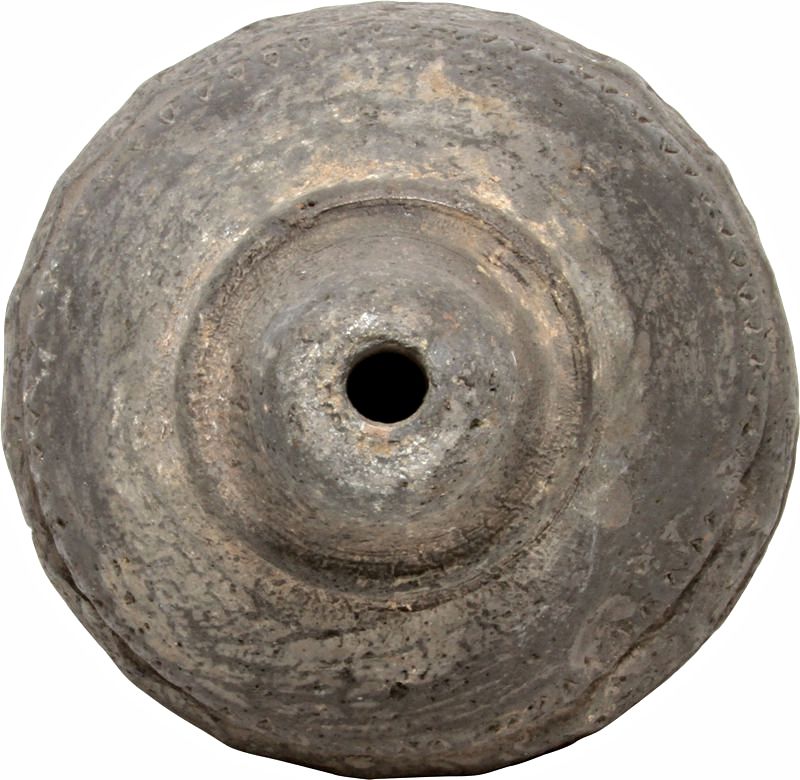Byzantine Greek Fire Grenade in Ceramic
Nov 16, 2014 7:38:48 GMT
Post by Jack Loomes on Nov 16, 2014 7:38:48 GMT


Editor's Note: Though not a sword, I thought this specimen was sufficiently important to include in this collection.
The composition of Greek Fire is not currently known, though it is often described as being like pitch (as it has been by Fagan Arms below); however I suspect, from contemporary depictions that Greek Fire was probably more like Napalm A. Pitch for instance cannot burn on water as Greek Fire is frequently described as doing. Burning pitch does not turn water poured upon it into fuel, though Napalm A certainly does. The ingredients for Napalm A would not have been beyond the reach of Ancient and Medieval Romans and Greeks, so the proposition is entirely plausible. The ingredients of Greek Fire were such a closely guarded secret that they have been lost, and if the composition were as simple as a pitch based compound, it would not have been difficult for Byzantium's enemies to replicate it, though it appears that Byzantium's enemies were unable to replicate the formula for Greek fire.
10th century. 5 1/2" height. Turnip form black terracotta body decorated with bands of stamped decoration. Mushroom terminal top for a wick. A few small imperfections as made before firing. Known as "Greek Fire", these were filled with flammable pitch and thrown or catapulted. Upon impact they would burst, spewing their burning contents which would start fires as well as burn any enemy in their path. In the absence of antibiotics, such burns usually led to a slow death from infection. Ex: Fulbeck Hall, Grantham, Nottinghamshire, England.
Source: www.faganarms.com/byzantine-ceramic-grenade.aspx

.png?width=1920&height=1080&fit=bounds)